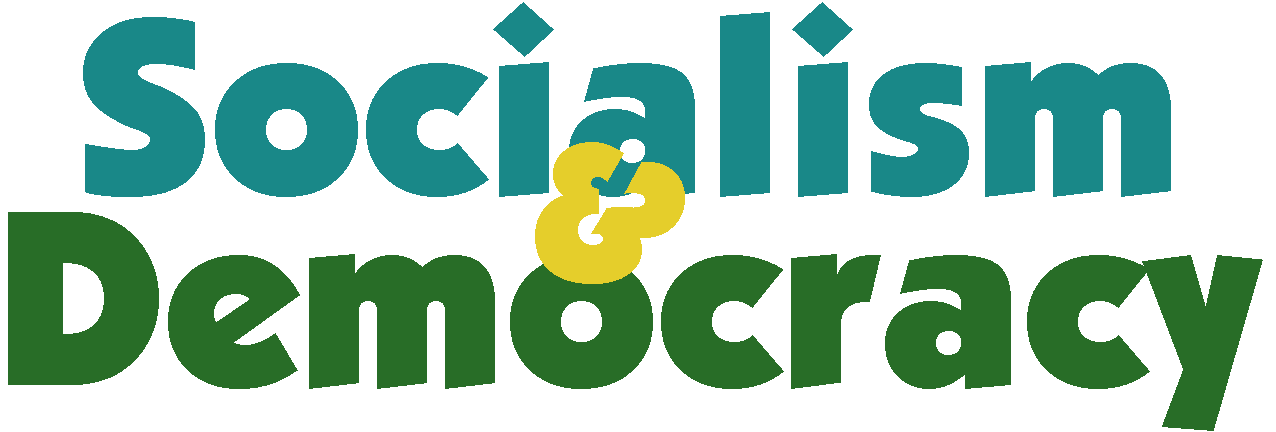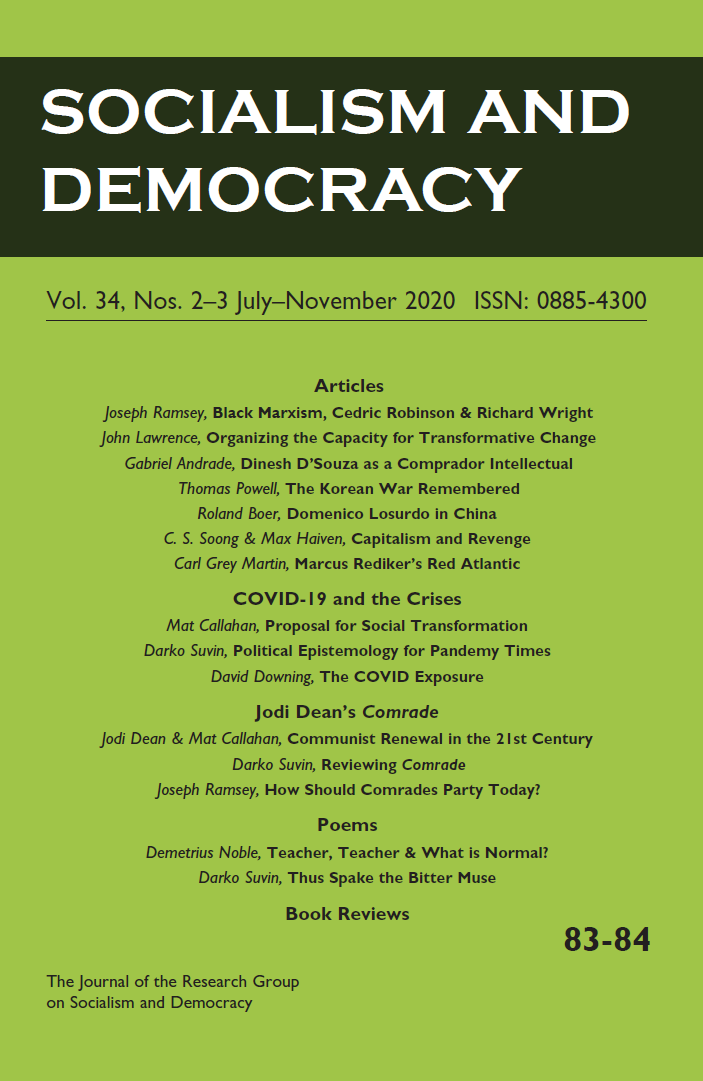John F. Levin and Earl Silbar, Editors. You Say You Want a Revolution. (San Francsico: 1741 Press, 2019), 404 pages, $18.95.
You Say You Want a Revolution is among a handful of books that deal with Maoism in the US, and the only one, to my knowledge to deal extensively with the Progressive Labor Party (PL). Of course, one can go online and access polemics written by PL or its critics. In particular, Five Retreats, written by disaffected PL members Jim Dann and Harri Dillon in 1977, is a useful summary of both PL's initial accomplishments and its subsequent decline. But what is available online consists mainly of documents from the period, not historical assessment. Though confined to memoir, making no pretense of being a historical or theoretical analysis, You Say You Want a Revolution's twenty-three contributors provide much useful information. Their testimony is honest, thoughtful, and forthright and can be viewed as evidence of an important component of a revolutionary era. They are, moreover, diverse in both the experiences they relate and the conclusions they draw. A couple authors defend PL and uphold its line, while most are critical, some disparagingly so. Yet there are no "turncoats" here. Each author makes self-criticism, but none renounces the struggle for social justice that got them involved in the first place.
The question arises: why has so little been written about PL? Half a century has passed since the events described in this book. Why did it take so long to bring these stories to light? The only other books that deal with Maoism in the US are Revolution in the Air by Max Elbaum (2002), Heavy Radicals (2015) and its followup, A Threat of the First Magnitude (2018), by Aaron Leonard and Conor Gallagher. Does this dearth reflect the historical significance of the phenomenon? Was the influence of these Maoist groups so ephemeral that it is not worth the effort to recall? To some extent You Say You Want a Revolution answers these questions by describing how PL took positions that alienated it from not only the broad anti-war and Civil Rights movements but from a revolutionary element that was, by 1969, increasingly influential in the Movement overall. On the one hand, it was PL's own doing that made it a pariah, on the other hand, writing PL out of history does not explain either the Maoist current or its temporary ascendency among radical youth at the time.
The FBI certainly acknowledged this phenomenon with J. Edgar Hoover writing an article to that effect in 1971. According to Hoover: "PLP's chief contribution to the Red Chinese cause has been the 'pulling off' of an almost unbelievable revolutionary feat – that of not only influencing, but ideologically capturing a sizable number of America's most militant and radical youth!" Hoover also mentions the Revolutionary Union, the "other" Maoists, describing PL and the RU as "not large" in membership (in both cases numbering in the hundreds), yet "working zealously for the Red Chinese cause." Hoover's notorious paranoia might make these claims seem exaggerated but there are other, better known, indications of how influential revolution and Maoism were. Indeed, one is where You Say You Want a Revolution starts off.
Presumably, editors John Levin and Earl Silbar were aware that the title of their book is the first line of a Beatles song, "Revolution," which famously rejected revolution ("you better free your mind instead") and Mao Zedong ("if you go carrying pictures of Chairman Mao, you ain't gonna make it with anyone anyhow"). They must have known that John Lennon, among the most influential musicians in the world in 1969, was responding to the fact that not only revolution but Mao and China were an inspiration to millions of youth. Lennon himself confirmed this in subsequent interviews, at first mitigating his stance and later altering it in favor of revolution. As to the Chairman Mao reference, one of the more egregious omissions in standard narratives of the Sixties, is the extent to which the Cultural Revolution was viewed by young people in the West as part and parcel of their own revolt against authority, especially in high schools and universities. In stark contrast to the Soviet suppression of Prague Spring in 1968, China and Mao became symbols of communist renewal.
You Say You Want a Revolution presents personal experience of how this played out. Instead of anomaly, we have the spirit of the times. Instead of a lunatic fringe, we have young activists taking part in the central conflicts of the day. Accounts of the first trips to revolutionary Cuba (defying a State Department ban) and the first mass mobilizations against the war in Vietnam are noteworthy not only for their factual content but because they help explain the appeal of PL, a group that in short order would isolate itself even from the revolutionary Left. The role played in the student strike at San Francisco State by the book's editor John Levin exemplifies a militance and discipline which earned PL respect even as its analysis degenerated. Michael Balter's experience organizing within the armed forces is a view onto a larger field of inquiry (GI resistance) while various accounts of organizing in the South (e.g., Texas and New Orleans) and Midwest (e.g., Iowa and Wisconsin) give a sense of how seriously all the authors took the task of reaching workers and building a movement that combatted racism and the system responsible. At the same time, nearly all the authors recount how the leadership of PL was not only heavy-handed and doctrinaire but was also wrong and increasingly so as time went on, a point to which we will return.
The book's subtitle is "SDS, PL and Adventures in Building a Worker-Student Alliance." Participant accounts challenge prevailing notions about the breakup of what was once the largest radical student organization in US history. Bernardine Dohrn and the Revolutionary Youth Movement (RYM) faction, which evolved into Weatherman, were not, as the dominant narrative has it, the only or even the most important group to arise out of SDS. Several eyewitnesses describe the SDS national office bringing in Black Panthers to attack PL with said Panthers veering off-script into rants about "pussy power." Two write specifically about a more significant development, namely the "other" faction, Revolutionary Youth Movement II (RYMII), which would form the basis for the October League (OL) and the Revolutionary Union (RU). While PL was launching wild attacks on nationalism (all nationalism is reactionary), the Vietnamese (sell-outs for taking weapons from the revisionist Soviet Union and negotiating with the US) and China (soft on revisionism), OL and RU were formed in part by former PL members, in part from RYMII. As PL was isolating itself, the RU, in particular, was growing into a national organization ultimately becoming the largest of all the groups in what would later be known as the New Communist Movement.
In this way, You Say You Want a Revolution contributes to a fuller picture of world-historic events. Yet it raises more questions than it answers. And not only about the intricate details of factions and personalities. Pertaining to the Sino-Soviet split, there is a great deal more to add, bearing directly on the New Left in the US and on outcomes in Asia, Africa and Latin America, as well. Pertaining to Maoism as a current within the international communist movement You Say You Want a Revolution is largely silent, only one author specifically mentioning how great the influence of Mao's thought was on her. Yet these two themes are not only important historically, but they are also highly relevant today. Anyone seeking to grasp the geo-political significance of the current rapprochement between China and Russia cannot ignore the causes and repercussions of the Sino-Soviet split. Anyone seriously considering the situation in China, Nepal, India, or the Philippines has to take into account Mao's enduring influence.
The book does address PL's failure to grasp the contradictory nature of nationalism. But little is said of positions opposing PL's and they were multiple. Some, for example, were straight-up black nationalists, seeking a bigger piece of the capitalist pie. (The Panthers called these "Pork Chop nationalists.") Others were anti-imperialist, inspired by the wave of decolonization that swept the world following WWII, demanding independence, but not socialism. Then there were Marxist-Leninist upholders of internationalism and the right of nations to self-determination who contended, with Mao, that the national liberation struggle, led by the proletariat and its party, was a component in the worldwide struggle to defeat imperialism. Space does not allow a full exploration of these various positions, much less of their ramifications over time. But suffice it to say, these were issues that have not been resolved, or have been, but only unfavorably for the world's people.
From this broad perspective, the lapses and shortcomings of You Say You Want a Revolution are shared by the Left in the West and especially in the US. If the lessons the book seeks to impart include how poorly informed young revolutionaries were in the Sixties, then it should inspire us to correct that problem now. If You Say You Want a Revolution encourages a reappraisal of the Sixties and the many unresolved issues raised by those events, it is a welcome addition.
Mat Callahan
Bern, Switzerland
www.matcallahan.com
info@matcallahan.com

